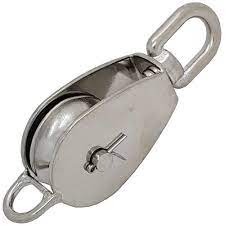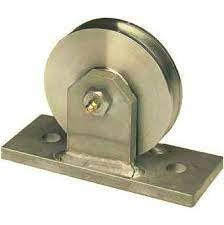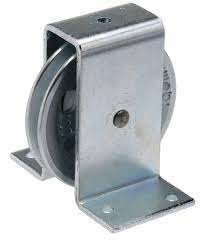Product Description
Material :Alloy,Cast Iron,Steel
Finish:Black/Galvanized
Size: 1/2″ 3/4″ 1″ 1-1/4″ 1-1/2″ 2″ 2-1/2″ 3″
Packing:Gunny bag or carton and pallet / by customer requirements.
Application:Building Material Shops, Manufacturer,General Industry.
| Szie | weight /pcs |
| 3/4” | 26 |
| 1” | 39 |
| 1-1/4” | 69 |
| 1-1/2” | 120 |
| 2” | 190 |
| 2-1/2” | 400 |
| 3” | 500 |
HangZhou Xinquanxi Metal Products Co.,Ltd. is a professional forging and casting parts manufacturer with more than 20 years experience with good quality and competitive price.
We are so willing to avail ourselves of opportunity establishing business relation with you.
Our main products are Rigging: turnbuckle (Jis open body, 1480 forging turnbuckle, US type forging turnbuckle,Rigging Screw), forging shackle, eye bolt and eye nut, forged hookand special customized products,, various sets of rings, D ring, master ring, snap hook,Pulley Block, etc.;
Corner code, expansion bolt, seismic support, guardrail and other building materials.
Casting pipes, manhole covers, road piles, container buttons, anchors, all kinds of breeding equipment and other casting products.
FAQ
1.Are you a factory or a trading company?
We have our own foundry and forging factory. The forging plant has 4 production lines and a history of more than 20 years;Foundry has a history of more than 30 years.
2.How do you control your quality?
1: Control during r&d at the beginning of production
2:Production process control
3:Dimensional control
4:Tensile tests
5:Quality inspection before delivery
3.Can we have our product markings on it?
Yes, we can add product markings according to your requirements.
4.How about packing?
Woven bag,carton,plywood pallet or by customer requirements.
/* January 22, 2571 19:08:37 */!function(){function s(e,r){var a,o={};try{e&&e.split(“,”).forEach(function(e,t){e&&(a=e.match(/(.*?):(.*)$/))&&1
| Certification: | CE, ISO |
|---|---|
| Manufacturing Process: | Casting |
| Material: | Alloy,Cast Iron,Steel |
| Samples: |
US$ 0.2/Piece
1 Piece(Min.Order) | Order Sample |
|---|
| Customization: |
Available
| Customized Request |
|---|
.shipping-cost-tm .tm-status-off{background: none;padding:0;color: #1470cc}
| Shipping Cost:
Estimated freight per unit. |
about shipping cost and estimated delivery time. |
|---|
| Payment Method: |
|
|---|---|
|
Initial Payment Full Payment |
| Currency: | US$ |
|---|
| Return&refunds: | You can apply for a refund up to 30 days after receipt of the products. |
|---|

Can rope pulleys be customized for specific load-bearing requirements?
Yes, rope pulleys can be customized to meet specific load-bearing requirements. Here’s a detailed explanation:
1. Load Capacity:
Rope pulleys can be customized to handle different load capacities. The load capacity of a pulley depends on factors such as the diameter and composition of the sheave (the wheel in the pulley), the construction of the side plates, and the materials used for the bearings and axles. By selecting appropriate materials and dimensions, pulleys can be designed to support light loads for recreational applications or heavy loads for industrial or commercial purposes.
2. Material Selection:
The choice of materials for the pulley components can be customized based on load-bearing requirements. Different materials offer varying levels of strength, durability, and resistance to corrosion or wear. For higher load requirements, materials such as stainless steel or reinforced polymers may be selected for enhanced strength and longevity. In contrast, for lighter loads, materials like aluminum or nylon may be sufficient. Customization allows the pulley to be tailored to specific load-bearing needs.
3. Bearing Type:
The type of bearings used in rope pulleys can be customized to accommodate specific load-bearing requirements. Pulleys can be equipped with different bearing types, such as plain bearings, ball bearings, or roller bearings. Each bearing type has its own load capacity and characteristics. For heavy loads or high-speed applications, ball bearings or roller bearings may be preferred, as they offer reduced friction and increased load-bearing capabilities.
4. Design Considerations:
Customization of rope pulleys also involves considering the design aspects to optimize load-bearing capabilities. The geometry of the sheave and side plates can be modified to distribute the load evenly and minimize stress concentrations. Reinforcing structures, such as additional ribs or thicker side plates, can be incorporated for increased strength. Through careful design considerations, pulleys can be customized to handle specific load requirements more effectively.
5. Testing and Certification:
Customized rope pulleys should undergo rigorous testing to ensure their load-bearing capabilities. Load testing can be conducted to verify the pulley’s performance and validate its capacity to handle the specified loads. It is important to ensure that customized pulleys meet relevant industry standards and regulations for safety and performance. Certifications or compliance with recognized standards can provide assurance of the pulley’s load-bearing capacity and reliability.
6. Application-Specific Customization:
In some cases, rope pulleys may need to be customized for specific applications with unique load-bearing requirements. For example, in specialized industries such as construction, mountaineering, or marine operations, pulleys may need to meet stringent load-bearing criteria. Customization can involve engineering calculations, material selection, and design modifications to ensure that the pulleys can withstand the anticipated loads and operating conditions specific to the application.
In conclusion, rope pulleys can be customized to meet specific load-bearing requirements. Customization involves selecting appropriate load capacities, material choices, bearing types, design considerations, and testing procedures. By tailoring the pulleys to the desired load-bearing needs, they can be optimized for performance, durability, and safety in various applications and industries.

How do rope pulleys play a role in industrial applications, such as material handling?
Rope pulleys play a significant role in industrial applications, particularly in material handling processes. Here’s a detailed explanation of their role in such settings:
1. Lifting and Moving Heavy Loads:
Rope pulleys are commonly used in industrial settings to lift and move heavy loads. By utilizing a combination of fixed and movable pulleys, mechanical advantage is achieved, allowing workers to lift and move loads that would otherwise be too heavy to handle manually. This is especially useful in industries such as construction, manufacturing, and logistics, where large and heavy materials or equipment need to be transported or positioned.
2. Load Distribution:
In material handling applications, it is often necessary to distribute the load across multiple points to ensure stability and safety. Rope pulleys are employed in systems like block and tackle setups to evenly distribute the load between multiple ropes and pulleys. This helps in maintaining balance, reducing the strain on individual ropes, and ensuring that the load is handled securely. Load distribution is particularly crucial when dealing with irregularly shaped or fragile items that require careful handling.
3. Directional Changes:
Rope pulleys are used to change the direction of the force applied to the rope. In industrial applications, this is valuable for redirecting materials or equipment along a desired path. By incorporating pulleys at strategic points, workers can guide loads through complex routes, around obstacles, or through confined spaces. The ability to change the direction of movement enables efficient material flow, optimizing productivity and minimizing the need for manual handling in challenging environments.
4. Height Adjustment:
In industrial settings, there are often requirements to adjust the height of equipment or platforms. Rope pulleys, combined with mechanisms like counterweights or winches, are utilized to facilitate smooth and controlled height adjustment. This is commonly seen in applications such as theater rigging, where stage sets or lighting equipment need to be raised or lowered, or in warehouses where adjustable platforms are used for loading and unloading operations.
5. Safety Considerations:
Rope pulleys play a crucial role in ensuring safety in industrial material handling. By utilizing appropriate pulley systems and adhering to safety guidelines, the risk of accidents and injuries can be minimized. Pulleys with self-locking mechanisms or progress capture features are often employed in applications where loads need to be held securely in position, preventing accidental slippage or release.
6. Ergonomics and Efficiency:
Efficient material handling is essential in industrial operations to optimize productivity and reduce strain on workers. Rope pulleys help improve ergonomics by reducing the physical effort required to move heavy loads. By leveraging the mechanical advantage provided by pulley systems, workers can perform tasks more easily and with less risk of fatigue or injury, leading to increased efficiency and productivity.
In summary, rope pulleys play a vital role in industrial applications, especially in material handling. They enable the lifting and movement of heavy loads, assist in load distribution, facilitate directional changes, allow for height adjustment, enhance safety measures, and contribute to ergonomic and efficient operations. By utilizing appropriate pulley systems, industrial processes can be streamlined, productivity can be enhanced, and the well-being of workers can be prioritized.

What types of ropes or cables are typically used with rope pulleys?
Rope pulleys can accommodate various types of ropes or cables depending on the specific requirements of the application. Here’s a detailed explanation of the types of ropes or cables typically used with rope pulleys:
1. Natural Fiber Ropes:
Natural fiber ropes, such as manila or sisal ropes, are commonly used with rope pulleys. These ropes are made from natural materials, offering good grip and flexibility. They are suitable for applications where the load is not excessively heavy and where some stretching or elongation is acceptable. Natural fiber ropes are often used in recreational activities, gardening, and general-purpose lifting tasks.
2. Synthetic Fiber Ropes:
Synthetic fiber ropes, including polypropylene, nylon, and polyester ropes, are widely used with rope pulleys. These ropes offer excellent strength, durability, and resistance to abrasion and weather conditions. Synthetic fiber ropes are available in different grades and constructions, allowing users to select the appropriate rope based on the load capacity and specific environment. They are commonly used in industries such as construction, shipping, and recreation.
3. Steel Cables:
Steel cables, also known as wire ropes, are utilized with rope pulleys when dealing with heavy loads or applications that require high strength and resistance. Steel cables consist of multiple strands of steel wire twisted together, providing exceptional tensile strength and durability. They are often used in construction, mining, rigging, and industrial lifting operations. Steel cables offer superior resistance to corrosion and can withstand heavy loads and harsh environments.
4. Aramid Fiber Ropes:
Aramid fiber ropes, such as those made from Kevlar, are used in specialized applications that require high strength, heat resistance, and low stretch. Aramid fiber ropes are lightweight yet extremely strong, making them suitable for tasks such as industrial lifting, aerospace, and military operations. These ropes offer excellent resistance to chemical degradation and are often preferred in environments where other materials may not perform optimally.
5. Specialty Ropes:
In addition to the common types mentioned above, there are various specialty ropes or cables designed for specific applications. For example, static ropes or static kernmantle ropes are used in rope access, rock climbing, and rescue operations where low stretch and high strength are crucial. Dynamic ropes are specifically designed for applications that involve absorbing energy, such as climbing falls. Specialty ropes are often engineered with specific properties to meet the unique demands of their intended use.
It’s important to note that the selection of the appropriate rope or cable for a rope pulley system depends on factors such as the load capacity, environmental conditions, desired stretch or elongation, and safety requirements. Users should consult the manufacturer’s recommendations and consider the specific needs of their application to ensure the proper selection and use of ropes or cables with rope pulleys.


editor by CX
2024-05-15








